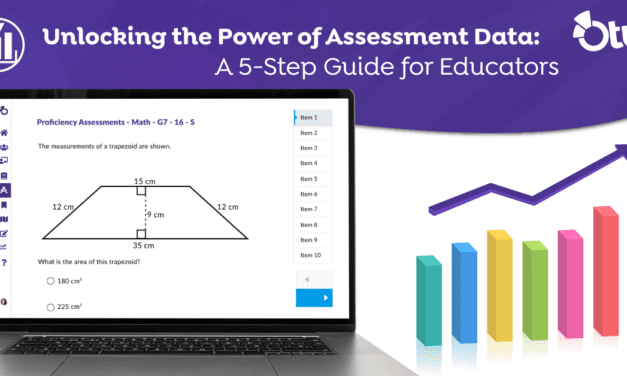When I was a sixth-grade English language arts teacher, our instructional coach approached staff members to gather information about how Measure of Academic Progress (MAP) goal setting was implemented with students after the fall testing window closed. She offered to analyze current data and model an effective strategy that would be helpful when creating action plans using MAP goals and target areas with our students. I quickly agreed. After our initial conversation, our coach modeled the lesson for the class. This was the first time I was able to circulate the classroom and watch another educator facilitate learning with my students. Some of my takeaways from this experience follow.
1. Goals must be feasible.
The first step to creating a solid action plan is to make sure the plan is realistic. Setting realistic goals is difficult, especially when you are excited and determined to do your absolute best.
Our instructional coach shared a story about her husband’s desire to lose weight. His initial plan was to go on a diet and lose 30 pounds the first month. I could see the eyes of my students widen as they realized this plan was not possible, or healthy. The same realistic mindset should be taken into consideration when setting MAP goals. Students were asked to think about the amount of time between now and the next testing period when creating their action plans.
2. Goals and action plans must be measurable.
Measurable action plans enable students to stay on track to meet their goals. They also must be clear and include direct evidence. It is important to think about how the student is going to keep track of their progress. Each child already had a measurable goal in place, their MAP goal, but the steps within the action plan needed to be visible as well.
The coach continued the story about her husband and asked the students how he would know if he was successful. They quickly replied, “A scale!” This example was extremely helpful during individual conferences with students. If a student suggested their action plan would include reading more each night, we directed them to attach a specific time limit or number of pages.
3. Goals must be sustainable.
During many of the conversations I observed, students claimed they would work toward their goal on a daily basis. While this might be the case for a select few, most are going to be dedicating a few days each week to their action plan. Our coach reminded students their action plan must be maintainable and they should think about other events that occur during the week. We asked students to bring their assignment notebooks during our goal-setting conversations to pencil in specific times during the week.
4. Goals must be meaningful.
Most importantly, the action plan must be meaningful to each individual. If they are important and motivating, there is a greater chance of achievement. I was amazed by some of the action plans students were creating. From completing vocabulary activities on the app Elevate to creating word search games using unfamiliar words found in their independent reading books, the options were endless.
Reflections
I met with our coach after the lesson to discuss my observations. I shared that I thought the students had understood MAP goals and their target areas; however, after circulating the room without the additional pressure of teaching a lesson, I realized many of my students had only been nodding in agreement when asked if they understood their target area and goal for the next testing window. There seemed to be a newfound understanding of the concepts and I could see my students were directly applying their learning during the goal-setting meetings.
The following day, our coach joined my class again, but this time to observe my teaching of the same strategy while conferencing with students. She listened carefully to the questions I asked students while helping them set their individual action plans. During our next meeting, I shared that this process not only required me to reflect but to also take action and make changes to my current practice.
At the end of our conversation, I decided to create my own goal—to implement new strategies in my teaching practices. I would do this by meeting with our instructional coach three times per year and completing the coaching cycle. This goal was feasible, measurable, sustainable, and, most importantly, meaningful.





